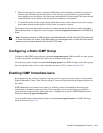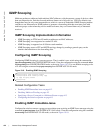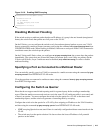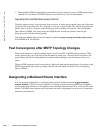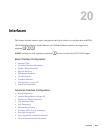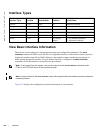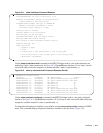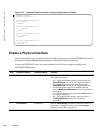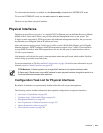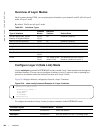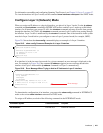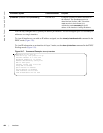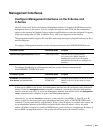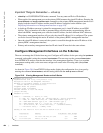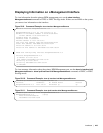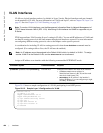
Interfaces | 419
To confirm that the interface is enabled, use the show config command in the INTERFACE mode.
To leave the INTERFACE mode, use the
exit command or end command.
The user can not delete a physical interface.
Physical Interfaces
The Management Ethernet interface, is a single RJ-45 Fast Ethernet port on the Route Processor Module
(RPM) of the C-Series and E-Series, and provides dedicated management access to the system. The
S-Series systems supported by FTOS do not have this dedicated management interface, but you can use
any Ethernet port configured with an IP address and route.
Line card interfaces support Layer 2 and Layer 3 traffic over the 10/100/1000, Gigabit, and 10-Gigabit
Ethernet interfaces. SONET interfaces with PPP encapsulation support Layer 3 traffic. These interfaces
(except SONET interfaces with PPP encapsulation) can also become part of virtual interfaces such as
VLANs or port channels.
Link detection on ExaScale line cards is interrupt-based rather than poll-based, which enables ExaScale
cards to bring up and take down links faster.
For more information on VLANs, see Bulk Configuration on page 440 and for more information on port
channels, see Port Channel Interfaces on page 428.
Configuration Task List for Physical Interfaces
By default, all interfaces are operationally disabled and traffic will not pass through them.
The following section includes information about optional configurations for physical interfaces:
• Overview of Layer Modes on page 420
• Configure Layer 2 (Data Link) Mode on page 420
• Management Interfaces on page 423
• Auto-Negotiation on Ethernet Interfaces on page 455
• Adjust the keepalive timer on page 457
• Clear interface counters on page 461
FTOS Behavior: S-Series systems use a single MAC address for all physical interfaces while
E-Series and C-Series use a unique MAC address for each physical interface, though this results in no
functional difference between these platforms.



